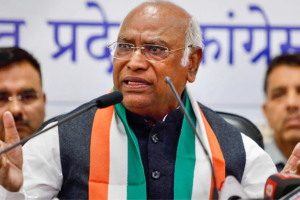Britain’s feisty news show host Piers Morgan in an online brawl with an “Anonymous Journalist” on Twitter last week summarized the peculiar challenges and chicanery of the digital age journalism of our days. In a series of 22 tweets, an ‘Anonymous Journalist’ (the Twitter account name) accused the former editor and now ‘Good Morning Britain’ host Morgan of buying fake followers to inflate his 7.5 million Twitter following – the most-followed Twitter account of a journalist in Britain, if not the world.
Morgan denied and threatened “action” against the accuser.
Advertisement
Their spat caused interest partly because Morgan evokes extremes of people liking or detesting him.
But the Jekyll and Hyde nature of Morgan’s media life reflects the boons and banes of journalism in Internet times. Since the Internet with the World Wide Web entered our lives mid-1990s, journalism had a stirring shakeup of a kind that affected no other essential service or industry.
It affected all levels. Within two decades, relatively solid print media editorial meetings judging newsworthy articles have given way these days more to chasing ‘clicks’ of the digital age. Statistics of website visitors’ preferences increasingly determine what can be published or binned.
We have not merely the tail wagging the dog, but the dog owning its master.
In many ways, both good and worst aspects of past generations of journalism have frenetically multiplied in the digital age version.
For instance, in the past, muck news lusting for readership was once easy to banish as “gutter press”. Such distinctions dissolve in ‘click-bait journalism’, the desperate chasing of webpage hits.
The Piers Morgan fake-followers spat was only the tip of a mountainous iceberg showing how egoistic individuals – and their marketing agents, employers – feed an industry of Internet touts selling fake followers.
In this pathetic game of fake followers, individuals, media entities, corporates, political parties and governments buy “influence”, whether to gratify sick ego addiction, fake online readership, earn money, manipulate public opinion or even an election.
Fake followers, like their predecessors of manipulated readership surveys and TV ratings, followed when big money rolled into social media for those with millions of followers or with content viewed millions of times. Familiar household names may not themselves be aware of how many fake “followers”, if any, have been directed to their accounts from crooked marketers.
Internet touts sell 1,000 “followers” for $90, $1,350 for 15,000 fake generating bots. Twitter daily cleans up millions of fake accounts and suspended 70 million suspected accounts already in May.
But the fake agencies sell “refills”– few gigantic egos can sit quietly seeing their “followers” reducing. Instagram “management” company Hopperhq showed stakes involved with its 2019 list of top 100 Instagram earners: model Kylie Jenner earning $1.2 million for each sponsored post, footballers Cristianio Ronaldo $975,000 and Lionel Messi $648,000, actress Priyanka Chopra $271,000, cricketer Virat Kohli $196,000 (Rs 1.49 crores), for, remember, per post of a picture or video clip with a few words to their millions of followers and “followers”.
Social media fakery infected professional media and vice versa.
Both ‘click’ and ‘click-bait’ journalism (for instance, using imbecile headlines such as a Delhi-based newspaper’s sports department does to induce readers into clicking on articles) worsened with advertising revenues drastically shrinking.
Fatter sums for online advertising appear only with site visitors in millions. Inevitably, manipulating readership surveys TV ratings had their digital age descendant with fake page visits concocted through paid-for ‘clicks’. “At the end of the day it’s all about traffic”, blithely admitted a blogger earning through Google Adsense.
A $1000 income from online readership needs about 100,000 visitors a month clicking on advertisers. Then begins the ‘clicks’ chase, with more writers, journalists, editors slavishly obeying automated SEO bots (Search Engine Optimization) that tell which keywords bring more traffic: the tail wagging the dog which owns its master.
Such dog-owned editorial judgment means more media articles published not to serve facts and truth, country and the world, but for potential ‘clicks’. More editors and journalists of online publications have become circus clowns desperately dancing to draw a bigger crowd to earn their wages. They lean more not on quality journalism and professional discretion but on live statistics on site hosts such as Google and WordPress.
They detail a website visitor’s city, country, time spent on pages visited and more – demographic readership micro details that once was domain of the marketing department. Obviously, the Internet was the biggest evolution in journalism, including traditional print media.
An article published in a newspaper could be instantly read worldwide through its online avatar when in earlier years it took a minimum of a week to reach overseas readers. The Internet became the biggest global research library in human history, which in earlier years meant spending sunny mornings or drowsy afternoons in limited resources at the American Consulate Library, its British counterpart, Asiatic Library, or bespectacled documentation centre librarians dragging out piles of magazine back issues.
The Internet became a heaven of journalistic information and interaction, with thousands of credible sources available at the click of a mouse, email interviews across continents. Then, as with all good things in life, the dark side emerged – including ironically a parallel entity called the Dark Web: a hidden online underworld where murky adventures if not illegal misadventures are buried deep within the Internet and beyond the ordinary user’s access.
But the Dark Web can be a ghostly poltergeist compared to greedy mischief of Internet era journalism, starting with the copy-paste masterpieces of intellectual property banditry. We now have plagiarism detecting online tools: copy-paste the copy-paste masterpiece at the required box, and the online plagiarism detective trawls through millions of texts to spot how much the ‘author’ pinched from other authors. Deadlier than copy-paste “journalists” however is the lust for fake followers and fake clicks, with parallel hunting tools to detect fake bots.
Fakery has become a viral journalistic pandemic of the digital era, threatening the core existential purpose of journalism. This is why honest journalists are worth their weight in gold.
The writer is a senior, Mumbai-based journalist.











